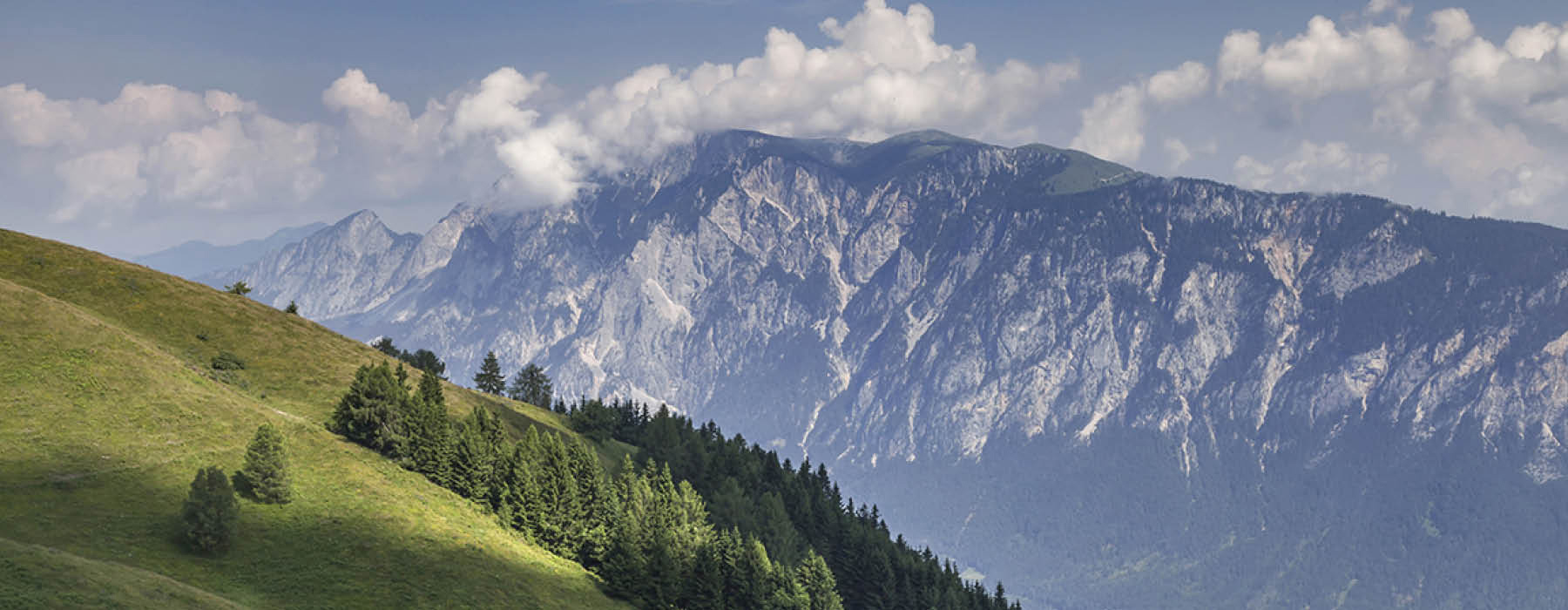January
February
March
April
May
June
July
August
September
October
November
December
Whether you're seeking sun and sea, powdery snow, or a relatively crowd-free city break, Slovenia makes for a wonderful year-round destination. If you’re wondering when the best time to visit Slovenia is, we’ve got you covered. Read on for our guide to what to expect from the weather in this central European stunner.
January: Head for the Slopes
Slovenia is generally cold and wet in January and snow and fog are also frequent. If you’re heading to Ljubljana and the central regions, pack your thermals as temperatures average between 0 and 2°C. Conditions are similar in Lower Styria, although somewhat drier, but this can be a great time to enjoy Slovenia’s snow-capped mountains. Head to Kranjska Gora, the country's premier winter sports resort, which has much to offer beginners as well as advanced skiers and snowboarders. To warm up a little, aim for the coast where winters are relatively mild (around 7 °C on in Koper) but still on the wetter side.
February: Winter Persists
In February, rainfall is heavy in the capital and the temperatures remain low. The same applies to Lower Styria, Upper Carniola and the Alpine area, which is still ideal for winter sports. The Adriatic coast is the mildest region with slightly higher temperatures and persistent rainfall.
March: A Taste of Spring
Spring is by far the quietest time of year to explore Slovenia's natural wonders and medieval castles. Ljubljana is 7°C on average, as is the Alpine town of Bovec. Be sure to avoid the slopes though, as skiing is not recommended after mid-March. The south enjoys mild temperatures, hitting around 14°C in the afternoon, but the rain rarely lets up. To stay dry, head to Maribor where the average temperature is 7°C. You’ll be rewarded with remarkable scenery, rolling hills, medieval ruins and a magnificent old town.
April: Temperatures are Rising
Rainfall is still quite intense in April so if you want to focus on drier areas, head for the centre of the country. Ljubljana is particularly lovely from April onwards as locals begin to flock to the outdoor cafes, the parks and the river. Be sure to visit the old town and its large market as well as the hilltop castle.
May: Spring Showers
It’s very wet across the country in May, particularly in Upper Carniola and the Alpine region, followed by Lower Styria, the centre and the southern zone. On the other hand, the temperatures are rather tempting so you should dry off quickly.
June: A Mixed Month
It’s frequently sunny in most regions in June and the temperatures are good (around 20°C on average). Showers should be expected but, equipped with a good raincoat, you can enjoy your visit and - as the saying goes - there’s no such thing as bad weather, only bad clothing. If possible, avoid the hills and Lower Styria and head instead for the centre or the Adriatic coast which is home to the charming town of Piran, renowned for its Gothic architecture and cute colourful houses.
July: The Rain Fades
While the mountainous areas are still mired by rain (despite being fairly warm), the capital and the south are drier. Lower Styria, on the other hand, is still quite prone to deluges. On the plus side, the temperatures hit between 21 and 26°C in these regions.
August: Peak Season
The centre of Slovenia is decidedly less humid than at the beginning of summer, so this is a very good time to visit the capital, although you’ll likely experience the odd showers here and there. The mountains remain rainy but when the downpours subside, Bled offers a very summery setting. Nicknamed the ‘Pearl of the Alps’, it’s home to a lovely lake overlooking the Julian peaks and a castle perched on a rocky outcrop. If time permits, visit the Vintgar Gorge which can be admired from wooden walkways winding through beautiful nature. The coast is also very pleasant at this time: temperatures are around 26°C on average so you can enjoy the sunny seaside. Lower Styria, by contrast, remains quite rainy. One of the most popular events of the capital's cultural and artistic summer takes place in August and there are plays, concerts and outdoor performances across the city.
September: Rain and Sun go Hand in Hand
Temperatures drop a little in September while remaining pleasant (between 16 and 18°C in most areas) and mainly sunny. But the rains are poised for a comeback and no region is spared, so grab your brolly if you go to Slovenia during this period, especially in the hills.
October: A Pleasant Autumn
The country is a little drier in October and the temperatures remain quite pleasant (between ten and 12°C in most regions and 16 in the south), so Slovenia is very visitable. In particular, the coastal zone is blessed with good weather, punctuated by the odd shower. An international festival celebrating contemporary art and culture takes place in October in Ljubljana, where around 50 female artists exhibit their work.
November: Quite Cold and Rainy
Although far from the bitter winter chill, Slovenia cools considerably in November and the rain returns. In the mountainous areas, temperatures hover around 6°C while the capital and Lower Styria are a little warmer. The Adriatic coast remains the mildest, hitting 12°C on average. But the rain does not spare any destination.
December: Winter Makes its Entrance
The ski season starts at the end of November if there’s heavy snow in the mountains. Otherwise, it starts in the middle of December, and it’s a wonderful place to spend Christmas. Overall, the country averages around 3 to 4°C, except in the south where it can peak at a comparatively balmy 10°C. The driest region in December is Lower Styria, which is cold but conducive to visits as long as you’re bundled up.



